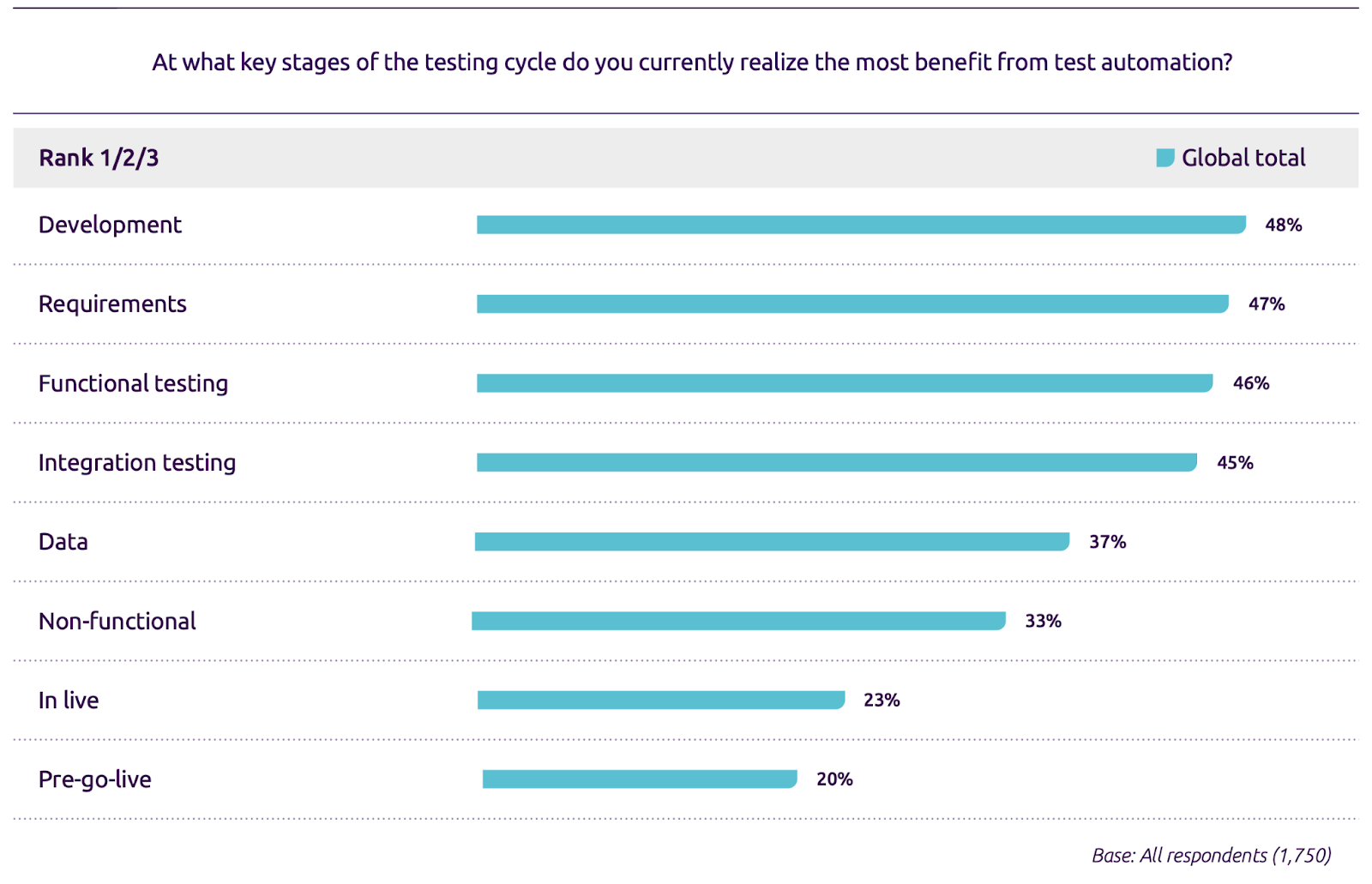Article written by Valentin Kuzmenko, Chief Commercial Officer/ VP of Sales at Andersen
The past several years were exceptionally rich with an unprecedented boom of tech just as they were with multifaceted impediments faced by organizations on a global scale. However, this marvelous and partly forced progress with its myriad benefits that marked all major industries was unattainable for business owners who failed to reshape some of their processes. To swiftly conduct the revamping without sacrificing the quality, firms had to embrace streamlined development approaches, which included, among others, acknowledging the importance of automation testing and embedding automated QA into their routines.
To start off, let’s clarify the notion of automation testing. Throughout this process, specialists who have also mastered programming create bots with the employment of dedicated programs. These scripts are autonomously combing through the code, interacting with various elements on the page, and carrying out other maneuvers to pinpoint discrepancies and communicate them to the team.
Here’s the brief outline of an automation testing flow:
- Particular test cases are slated based on the desired recurrence of checks, app elaborateness and robustness, and the requirement for backward compatibility testing.
- Best-matching toolkit is composed that can merge both non-proprietary and licensed options to efficiently design and execute verifications. When doing the selection, a business normally compares the benefits of offers like Selenium, JUnit, Appium, and many more, in alignment with their app’s software stack, its underlying coding languages, and the ambitions and purposes of this business.
- The culmination of the entire routine is the elaboration of scripts with the employment of programming languages that are, as a rule, used for this purpose, e.g. Python, JS, or Java. As an alternative, a business can avail itself of the benefits and possibilities of some specific-purpose script-driven means extended by their automation testing software of choice. The resulting algorithms enclose a progression of commands that adroitly recreate consumer maneuvers within the app. As we indicated earlier, these can refer to triggering buttons, finalizing form fields, traversing through interfaces, and more.
- The requisite test data are arranged, entailing database entry configuration, mock-up record formulation, and input parameter provision. By taking care of these measures, a business guarantees that the tests precisely mirror true-to-life scenarios.
- Among the benefits of solid testing software are its multifaceted interplays with your app’s front end, APIs, and other building blocks, as well as verifications of the outcomes against anticipated behaviors.
- Submission of concise but informative reports during and upon the process completion is of importance as well. They present specifics on the acceptance/rejection status of the endeavors, aberrations observed, and descriptions of steps taken.
- Lastly, the importance of refining your scripts as the app advances cannot be overstated. This upkeep benefits your consumers by securing impeccable product standards.
According to the latest World Quality Report by Capgemini, over half of the surveyed companies shared that they considered the knowledge of test automation of exceeding significance in their strive for adaptability. The same rundown brought about automated testing benefits that we all know, nevertheless, specifying them would not come amiss.
Moreover, the survey participants stated that they avail themselves of the benefits of automated QA at sundry stages of the software development lifecycle.

Read on to learn why adopting this QA technique is a must for a winning business.
Reason #1: Accelerated time-to-market
Among the most sophisticated and subtle ways that a business can try out to refine and expedite production, there is comparatively uncomplicated automation testing.
In tandem with the solution’s heightened complexity, there come escalatingly recurrent rollouts. Thus, manually conducted QA wanes in effectiveness.
The importance of automation testing resides in its consistency and replicability, and therefore, in process scalability. With the help of automated testing tools, human blunders due to oversight or misjudgments are eliminated, which substantially shortens the programming-QA feedback cycle on any script amendments and thus, nips errors in the bud and expedites the production. Minor issues get resolved before turning into major hurdles and entailing broken features right toward the main release.
This technique in QA also facilitates swift test completion spanning sundry setups and platforms. This empowers numerous iterations within a concise timespan.
Among the undeniable advantages of automation testing is the significant acceleration of the course of regression checks. Why is this such a crucial point for a business? Simply because one can be absolutely confident that the amended scripts won’t in any case disadvantageously affect already established features, and thus, version updates will go smoothly.
Another invaluable addition to this approach is that it allows for the flawless incorporation of diverse CI/CD instruments. This way, checks of any volume and complexity are immediately commenced subsequent even to the slightest script modification. This not only greatly aids in maintaining the continuity of the programming-verification flow but also cultivates team-to-team cooperation. What’s more, software engineers can now independently initiate and conduct the required checks of the pieces of code without resorting to the help of their colleagues from the testing department. Needless to say, this speeds up the recognition of problematic areas and subsequent troubleshooting.
Reason #2: Improved product quality
With the progressing intricacy of modern IT solutions, the threat of blunders that remain unnoticed after the code undergoes manual checks increases as well. And the consumers getting into their hands a final product with irritating inconsistencies in it is the last thing a business would want, isn’t it? This is not only because of budget-draining glitch rectifications but also due to inevitably dilapidated reputation.
Among the remarkable advantages of automation testing are increased process exactitude and continuity, as well as the all-encompassing nature of these verifications. The latter refers to the continuous execution of designated scenarios, which means that every facet of your program is maliciously verified against possible flaws and inconsistencies.
The strong suit of automation testing is also, undoubtedly, its remarkable ability to go through a considerably wide range of recurrent and laborious scenarios in no time. Various checks are accomplished with uniformity that effectively diminishes the fluctuation brought about by manually conducted verifications.
The augmented program excellence is also reached thanks to the reproduction of real-life user activities across diverse tech setups and hardware. This is how these benefits are brought to fruition in more detail:
- Coders or QA engineers design coding logic or test sequences that exactly replicate the actual user’s behavior in the app.
- Frameworks and libraries serve for programming automation testing cases that continually engage with newly created graphical components.
- Lastly, various virtualizers and simulating software precisely model the functioning of actual devices and OSs.
Reason #3: Cost efficiency
It’s generally understood that assimilating automation testing into the routines of a business calls for a considerable starting spending on configuring systems, engaging seasoned QAs, and purchasing dedicated toolkits. However, by leveraging this technique one will undoubtedly cut down sundry expenditures on defect resolution over the long haul.
While it doesn’t appear feasible to completely forgo manual checks, they are, unquestionably, a money-exhausting pursuit. They require involving proficient specialists whose entire mission is to unceasingly conduct recurring testing sequences in line with multiple scenarios.
By streamlining mundane and laborious chores, firms markedly curtail the necessity for staff. Thus, a sizable percentage of verifications can now be repeatedly reiterated being free from any extra manpower outlays. Additionally, these never-seizing checks signify the enhanced use of computing power. The remaining professionals, in turn, have the full freedom to zero in on more demanding and inventive endeavors.
As indicated earlier, the importance of automation testing is that it extensively shortens the validation timeline, including through expedited issue spotting and correction. Thanks to this forward-thinking outlook, glitches don’t accrue, which keeps them relatively cheap to rectify compared to dealing with them later on in the SDLC.
Reason #4: Scalability and flexibility
There’s no business that is just standing. Everybody realizes the importance, or rather, the inevitability of scaling and adapting to the ever-evolving market panorama.
Factoring in the emerging tech landscape with its mounting intricateness, diversifying product assortments, increasingly speedy iteration loops, and the necessity to adapt to many varied platforms and user contexts, it’s impracticable and, moreover, insurmountable to uphold the mandated quality threshold with just hand-operated routines.
In our exhaustive listing of automated testing benefits, we couldn’t fail to mention its expandable nature and pliancy thanks to its impressive ability to concurrently handle a massive collection of test cases across varying contexts. This synchronized execution pronouncedly curtails the duration for expansive and intricate software validation while keeping its potency unchanged.
Furthermore, self-running verifications are seamlessly recreated, altered, and extended, which positions them as an impeccable option for swiftly transforming IT initiatives. These tests are a superb base for ramping your scripts up or down in response to fluctuating business needs.
Reason #5: Risk mitigation and compliance
With escalating tech intricacy, your business necessitates a dependable mechanism for detecting flaws, susceptibilities in security, and regulatory-related inconsistencies. This is especially true if you operate in a niche that is governed by stringent regulatory mandates where the gravity of blunders is intensified. On top of that, hand-operated routines, unquestionably, are susceptible to blunders and omissions.
Automation testing with its recurrent, consistent, and thoroughgoing algorithms lessens the unpredictability. Thoroughly programmed scripts guarantee the same congruity and comprehensiveness throughout distinctive testing loops.
As for security-centric testing, contemporary instruments adroitly model actual hacking instances with their common patterns, e.g. XSS exploits, SQL manipulation, authorization elevation, etc. This technique is, in addition to its other benefits, employed to prepare cybersecurity professionals for sundry actual-world breaches.
Additionally, logging testing cases, findings, and carried-out code furnishes a transparent account of compliance pursuits.
Reason #6: Early bug detection
When inconsistencies are spotted reaching the tail end of SDLC or, to compound the situation, after program rollout, it’s par for the course that the ramifications are grave. Tackling faults at this juncture instigates rollout holdups, surging engineering overheads, and, understandably, disadvantageous consumer reactions. What’s more, the cascading repercussions of a single glitch can spark a series of interwoven complications in the software engineering flow.
The importance of automation testing in this aspect lies in preemptive flaw recognition at the embryonic stages of SDLC. This is because carrying out pre-established scenarios consistently recognizes flaws forthwith upon their appearance in the code repository. Obviously, this approach brings along markedly curtailed spending on debugging.
Reason #7: Global collaboration and remote testing
It’s not easy, not to say arduous, to organize the work across time region variances, multiethnic team compositions, and heterogeneous tech ecosystems. How to efficaciously bridge communication divides, eliminate disparate testing contexts, and confront difficulties in capturing authentic user behaviors to guarantee superb product quality?
Professionally established processes in QA automation testing definitely contribute to swift and seamless navigation around territorial confines by reserving outcome coherence universal in all locations.
Automated testing benefits standardizing practices across regions in the following ways:
- Automation testing instates regularized benchmarks and conventions universally across off-site crews and synchronizes pursuits to the criteria and aspirations of a business.
- It features unambiguous and regularized test cases that are effortlessly interpreted and grasped by co-workers spanning continents, thus clearing up misconceptions and ameliorating intercommunication between miscellaneous units.
- Automation testing is celebrated for its ability to be executed concurrently in distinct configurations so that co-workers who are scattered across locations can concurrently evaluate different facets of a program.
- Automation testing adeptly replicates real-life user interplays across assorted gadgets, interconnections, and geographical settings. Thus, a business can evaluate its programs in an exhaustive and systematic fashion within heterogeneous settings.
- Lastly, among the substantial advantages of automation testing is the hassle-free production of consistent summaries that are readily accessible among scattered specialists. These findings dramatically boost partnerships by presenting a coherent panorama of process outcomes and headway.
To wrap up, automation testing affords manifold benefits, e.g. it expedites evaluation intervals and elevates acuteness. Implanting an emphasis on this importance and benefits when drawing up specifications and thinking through user behaviors is absolutely requisite. At this, there’s no business that is in the right position to entirely rule out manual checks if it’s aiming at establishing all-encompassing testing coverage.


























